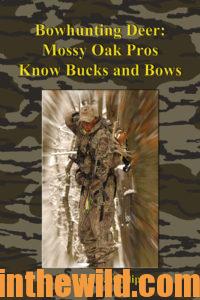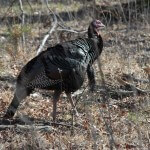 Editor’s Note: Since the days of Robin Hood and William Tell, hundreds of years have passed, millions of deer have been hunted, and thousands of hours been invested in bowhunting technology. Archers today may feel a kinship to a particular kind of bow that’s been developed through the years, with their equipment reflecting their bowhunting heritage. The bowhunter is not simply a hunter, but is a stylist who matches his bow to his style of hunting, to his philosophies and beliefs of what bowhunting should be, and to what he feels is the best way for him personally to take deer. Bowhunting has become so diversified as a sport, that today the archer has many different options as to the kind and style of bow he’ll select, and the way he’ll hunt. What kind of bow is best for you, and what type of hunting will most satisfy you? This week, we’ll look at several different kinds of bows, their advantages and disadvantages, the styles of hunting they represent, and the types of archer who choose them.
Editor’s Note: Since the days of Robin Hood and William Tell, hundreds of years have passed, millions of deer have been hunted, and thousands of hours been invested in bowhunting technology. Archers today may feel a kinship to a particular kind of bow that’s been developed through the years, with their equipment reflecting their bowhunting heritage. The bowhunter is not simply a hunter, but is a stylist who matches his bow to his style of hunting, to his philosophies and beliefs of what bowhunting should be, and to what he feels is the best way for him personally to take deer. Bowhunting has become so diversified as a sport, that today the archer has many different options as to the kind and style of bow he’ll select, and the way he’ll hunt. What kind of bow is best for you, and what type of hunting will most satisfy you? This week, we’ll look at several different kinds of bows, their advantages and disadvantages, the styles of hunting they represent, and the types of archer who choose them.
Some hunters said, “Those things aren’t bows but are mechanical arrow launchers.” We first heard the criticism not about the crossbow but rather about the compound bow when it first gained the attention of hunters in the 1960s. Then as manufacturers designed bows with more let-off, this same criticism was heard throughout the bowhunting community.
When crossbows were recommended to be used by hunters during bow season, the compound bowhunters along with the traditional archers lead the fight against  those, although the history of the crossbow was interwoven through many years of history.
those, although the history of the crossbow was interwoven through many years of history.
The bows bowhunters use to take big game will continue to evolve. However, there’s room enough in the world of archery for all types of bows.
The Compound: This mechanically-operated lightweight bow uses cams, pulleys and cables to help the bowhunter hold heavy draw weights at full draw. Materials to make these bows include fiberglass, carbon, aluminum and magnesium. The limbs are fairly stiff, making the compound energy efficient and helping to increase accuracy.
My long-time bowhunting buddy explains that, “The compound definitely shoots the arrow faster than a longbow or a recurve. The bowhunter can shoot a 70-pound compound with much more ease than he can a 55- or a 60-pound recurve or longbow. A compound may be difficult to draw until it breaks over, but once the bow lets-off, it easily can be held. Even though the bowman is holding less weight when he’s at full draw with a compound, once he releases the string, the energy returns to the bow. Then the bowman picks up the maximum weight of the bow to throw the arrow.
 “Another advantage of the compound is that the trajectory of the arrow will be much flatter than either with the recurve or the longbow. When I was shooting tournament archery with my recurve and my hunting friends, I noticed that my arrows rainbowed into the target, whereas arrows from their compound bows seemed to skim across the top of the ground and go straight into the target without dropping. When we went to the target to pull-out our arrows, I realized that their arrows were deeper in the target than mine were, which indicated to me that their bows were producing much-more force than my recurve bow was. I had to face the fact that this compound bow I had resisted for so long was, in fact, superior to my recurve.
“Another advantage of the compound is that the trajectory of the arrow will be much flatter than either with the recurve or the longbow. When I was shooting tournament archery with my recurve and my hunting friends, I noticed that my arrows rainbowed into the target, whereas arrows from their compound bows seemed to skim across the top of the ground and go straight into the target without dropping. When we went to the target to pull-out our arrows, I realized that their arrows were deeper in the target than mine were, which indicated to me that their bows were producing much-more force than my recurve bow was. I had to face the fact that this compound bow I had resisted for so long was, in fact, superior to my recurve.
“The typical modern archer shoots a compound. He never may have drawn either a longbow or a recurve. Often the modern archer is a two-season hunter, who hunts with a bow during bow season and a gun during gun season. When he goes into a store today, he observes that a large percentage of the bows being advertised and displayed are compounds, and only 5-10% of the merchandise will be longbows or recurves. Because of the sheer numbers of compound bows he sees, the modern hunter  will most likely select one, unless he’s hung up on tradition.”
will most likely select one, unless he’s hung up on tradition.”
The compound also has allowed a larger segment of the outdoor population to enter the archery market. The compounds are easier to draw, simpler to aim with the new sighting systems available, shorter and easier to carry and enable a beginner to reach a level of proficiency much more quickly than longbows or recurves.
The Crossbow: The crossbow has been around since medieval times and used by the military – starting in China around 600 B.C. This bow features a horizontal limb assembly that’s mounted on a stock and will shoot projectiles/arrows often called quarrels or bolts.
At some time in your life, you’ll either get hurt due to injuries, surgeries or other things that happen and not be able to pull a bow, or you’ll become too old to pull a bow. Most of us probably think that never will happen to us. But I can promise you it will. Should you have to give up bowhunting, just because you’re hurt or can’t pull a bow? This problem is one that the crossbow solves. Another problem the crossbow solves is that many Americans are working more and longer hours than ever in the past. They don’t have time to practice shooting every day and develop the muscle memory that’s required to pull a bow and shoot accurately enough to build-up confidence to go into the woods and take big game.
 Since each state has different regulations and seasons governing hunting with a crossbow – some states include crossbows in their muzzleloader season, others their bowhunting season and yet others during rifle season – always plan to learn and follow all the rules for the state where you plan to hunt. All crossbows need mechanical safeties, and the minimum draw weights can be from 75-125 pounds, with arrow tips having a minimum of two cutting edges – exposed or unexposed – and a minimum 7/8” or 3/4” inch width.
Since each state has different regulations and seasons governing hunting with a crossbow – some states include crossbows in their muzzleloader season, others their bowhunting season and yet others during rifle season – always plan to learn and follow all the rules for the state where you plan to hunt. All crossbows need mechanical safeties, and the minimum draw weights can be from 75-125 pounds, with arrow tips having a minimum of two cutting edges – exposed or unexposed – and a minimum 7/8” or 3/4” inch width.
Because of conservation efforts in every state, we now have bumper crops of deer but fewer hunters to harvest them. One of the ways to keep more bowhunters in the woods to help control overpopulations of deer and other big game animals is for outdoorsmen to shoot crossbows. Too, the crossbow has hundreds of years of history before the appearance of the compound bow. The crossbow is a primitive weapon, although many improvements have been made in the modern-day crossbow, as there have been in other types of bows.
To learn more about bowhunting, check out John E. Phillips’ book, “Bowhunting Deer: Mossy Oak Pros Know Bucks and Bows,” available in Kindle and print versions at http://amzn.to/1QGvdQx
Tomorrow: Things to Consider When Choosing Your Bow for Hunting










